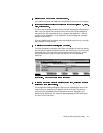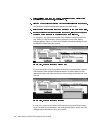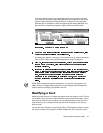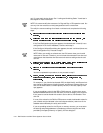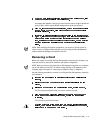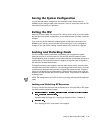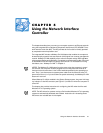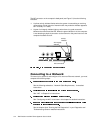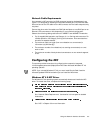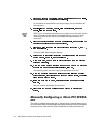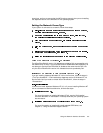
Using the ISA Configuration Utility 4-15
6DYLQJWKH6\VWHP&R QILJXUDWLRQ
You can save the system configuration to nonvolatile random-access memory
(NVRAM) as you configure each card’s resources. To do so, select Save from the File
menu and continue with your operation.
([LWLQJWKH,&8
At the ICU window, select Exit from the File menu to exit the utility. If you have made
any changes to the system configuration, you are asked whether you want to save the
changes.
If you click Yes, the ICU saves the updated system configuration information into
NVRAM. If you click No, you exit the ICU without saving any of your configuration
changes. If you click Cancel, nothing is saved and the utility continues to operate.
/RFNLQJDQG8QORFNLQJ&DUGV
The ICU includes a locking mechanism that enables you to allocate the system
resources for all or for some functions of Plug and Play and PCI expansion cards.
These expansion cards are
dynamic
, which means that they are allocated resources at
system start-up. Device drivers that do not support this dynamic card configuration
are referred to as
static device drivers
.
To determine whether your expansion card has static device drivers, check the docu-
mentation that came with the drivers. If you are using a static device driver, you need
to permanently associate resources with a Plug and Play expansion card, instead of
relying on the default Plug and Play behavior. Otherwise, the device driver might not
be able to find the card the next time the system boots. This procedure is referred to
as
locking
a card.
NOTE: The locking feature of the ICU is valid only for Plug and Play and PCI expansion
cards.
/RFNLQJDQG 8QO RFN LQJ$OO5HVRXUFHV
To lock or unlock all the resources and configurations for a Plug and Play or PCI expan-
sion card, perform the following steps:
Complete steps 2 through 8 in “Installing an Expansion Card” in Chapter 9.
See “Starting the ICU” found earlier in this chapter.



